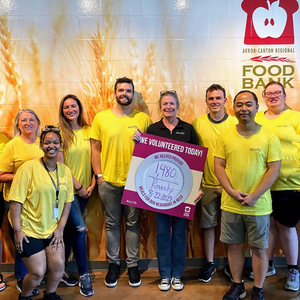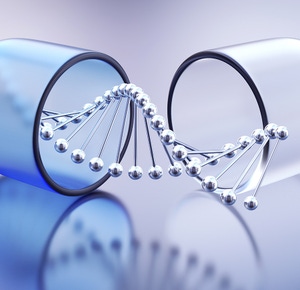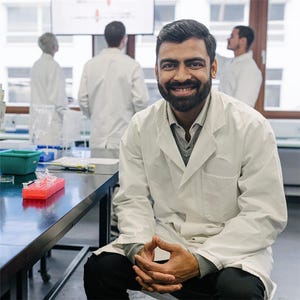

HTRF Human Total A-RAF Detection Kit, 10,000 assay points

HTRF Human Total A-RAF Detection Kit, 10,000 assay points


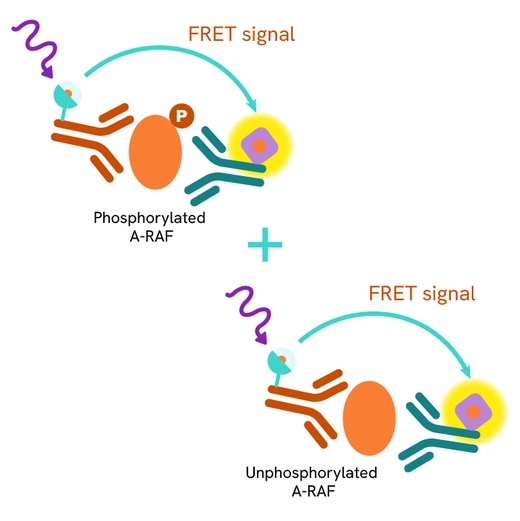

This HTRF kit allows for the cell-based quantitative detection of total A-RAF.
| Feature | Specification |
|---|---|
| Application | Cell Signaling |
| Sample Volume | 16 µL |
This HTRF kit allows for the cell-based quantitative detection of total A-RAF.


HTRF Human Total A-RAF Detection Kit, 10,000 assay points


HTRF Human Total A-RAF Detection Kit, 10,000 assay points


Product information
Overview
A-RAF is a proto-oncogene protein kinase. The RAS-RAF-MEK signaling cascade plays a pivotal role in modulating cellular processes such as proliferation, differentiation, and survival. This pathway is often constitutively activated in human malignancies characterized by RAS or RAF oncogenic drivers. Developing chemotherapeutic cRaf inhibitors is an attractive area of research in oncology and infectious diseases.
Specifications
| Application |
Cell Signaling
|
|---|---|
| Automation Compatible |
Yes
|
| Brand |
HTRF
|
| Detection Modality |
HTRF
|
| Lysis Buffer Compatibility |
Lysis Buffer 1
|
| Molecular Modification |
Total
|
| Product Group |
Kit
|
| Sample Volume |
16 µL
|
| Shipping Conditions |
Shipped in Dry Ice
|
| Target |
A-RAF
|
| Target Class |
Phosphoproteins
|
| Target Species |
Human
|
| Technology |
TR-FRET
|
| Therapeutic Area |
Inflammation
Oncology
|
| Unit Size |
10,000 assay points
|
How it works
Total A-RAF assay principle
The Total A-RAF assay measures A-RAF levels in cells. Unlike Western Blot, the assay is entirely plate-based and does not require gels, electrophoresis, or transfer. The assay uses 2 antibodies, one labeled with a donor fluorophore and the other with an acceptor. In presence of A-RAF this enables an immune-complex formation involving both labeled antibodies, and which brings the donor fluorophore into close proximity to the acceptor, thereby generating a FRET signal. Its intensity is directly proportional to the concentration of total protein present in the sample and provides a means of assessing the protein's phosphorylation state under a no-wash assay format.

Total A-RAF two-plate assay protocol
The two-plate protocol involves culturing cells in a 96-well plate before lysis, then transferring lysates into a 384-well low volume detection plate before the addition of Total A-RAF HTRF detection reagents. This protocol enables the cells' viability and confluence to be monitored.
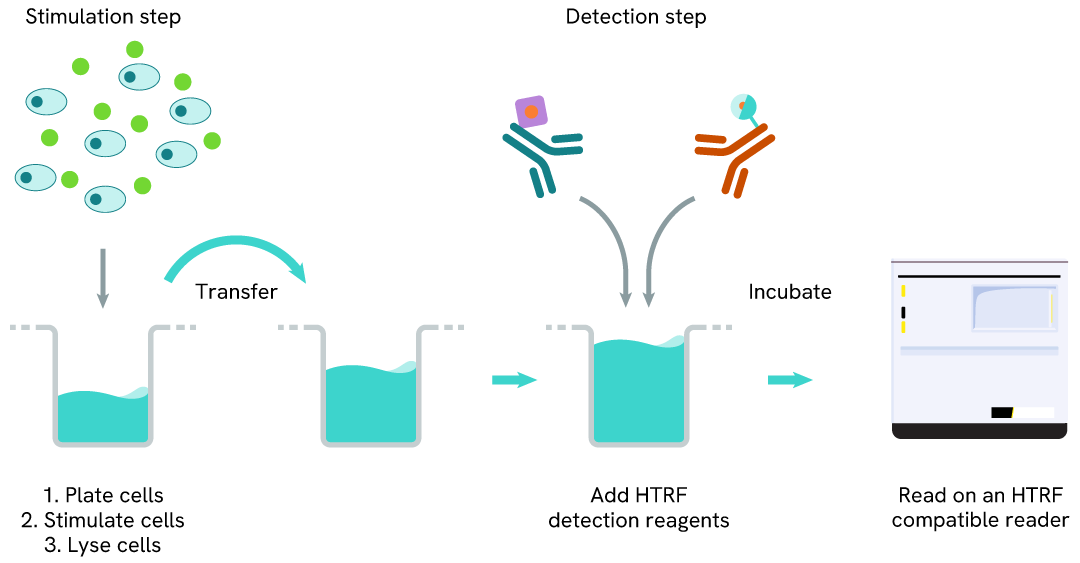
Total A-RAF one-plate assay protocol
Detection of Total A-RAF with HTRF reagents can be performed in a single plate used for culturing, stimulation, and lysis. No washing steps are required. This HTS designed protocol allows miniaturization while maintaining robust HTRF quality.
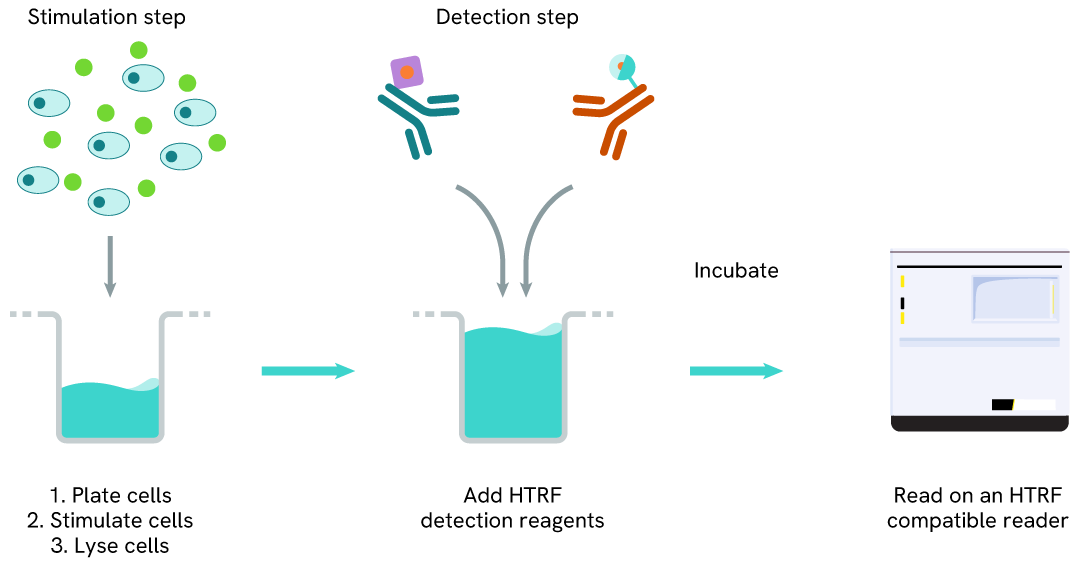
Assay validation
Induction of Total A-RAF in cellular model and siRNA-treated cells
HeLa cells were plated at different cell densities at 100 µl in 96-well plates in complete culture medium. For siRNA Treated wells, siRNA in culture media was added (Final concentration: 60 nM Dharmacon ON-TARGETplus siRNA and 2% DharmaFECT transfection reagent). For No-siRNA-treated wells, 100 µl of media+transfection reagent were added. For Untreated wells, 100 µl of plain media were added. Cells were then incubated for 48hrs at 37°C, 5% CO2.
After incubation, the media were removed, and cells were lysed with 100 µL of lysis buffer #1 at 1X for 30 minutes at RT under gentle shaking. Next, 16 µL of lysate were transferred into a low volume white microplate before the addition of 2 µL of HTRF d2 detection reagent and 2 µL of HTRF Eu-K detection reagent. The HTRF signal was recorded after ON incubation.
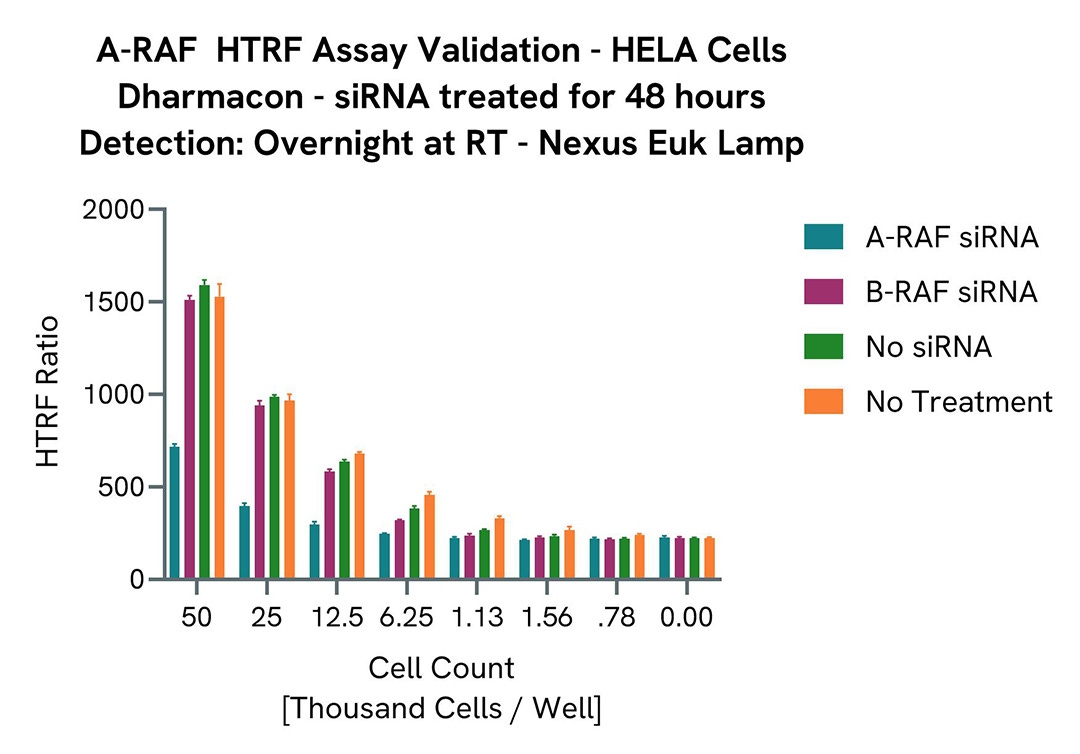
Simplified pathway
A-RAF signaling pathway
RAF proto-oncogene protein kinases (A-RAF, b-RAF, c-RAF) are part of the MAP kinase pathway, where it links the upstream effector Ras to the downstream MAPK/ERK cascade. It therefore plays roles in cell fate decisions including proliferation, differentiation, apoptosis, survival, and oncogenic transformation.

Loading...


How can we help you?
We are here to answer your questions.




